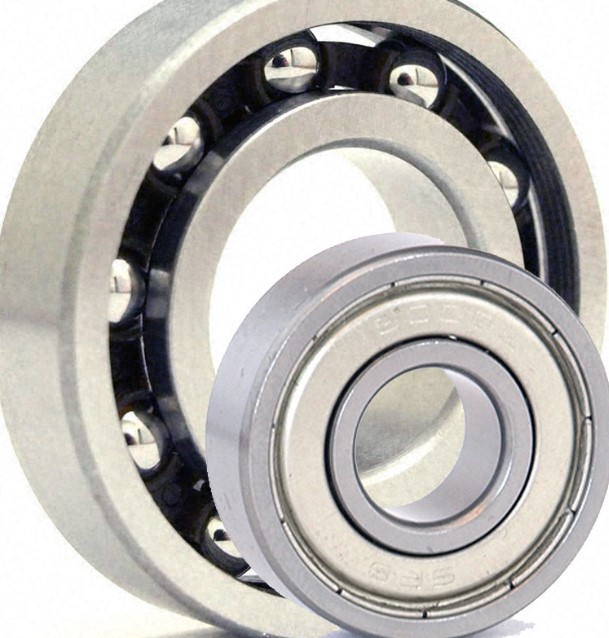Best Fishing Reel Bearings: Smooth Casting, Every Time
If you’re passionate about fishing, you know that performance is everything. From the rod to the lure, every component matters — but few parts impact your experience as much as the bearings inside your reel. Whether you’re casting into freshwater lakes or deep-sea fishing offshore, choosing the best fishing reel bearings can make all the difference in how smoothly and efficiently your reel performs.

Understanding Bearings in Fishing Reels
Before diving into which bearings are best, let’s start with the basics. Bearings are small steel or ceramic balls placed inside your fishing reel to reduce friction and ensure smooth rotation of moving parts. The more efficient your bearings, the easier your cast and retrieval become.
Most reels use ball bearings, which are precision-engineered to support the rotating elements of your reel. These bearings help your reel spin effortlessly — allowing for smoother casting, quieter performance, and better control.
When you’re comparing reels or looking to upgrade, pay attention to how many bearings your reel has and what materials they’re made from.
Why Ball Bearings Matter in Spinning Reels
The ball bearings in spinning reels play a critical role in overall performance. Spinning reels rely heavily on smooth rotation, especially during long casts and fast retrievals. The quality and quantity of bearings directly affect:
- Casting Distance: Less friction allows the line to flow more smoothly off the spool.
- Reeling Smoothness: You’ll feel less resistance and more control when reeling in your catch.
- Durability: Quality bearings prevent wear and tear, extending your reel’s lifespan.
- Noise Reduction: High-quality bearings create quieter, smoother operation.
Even a small difference in bearing quality can impact your fishing success — especially if you fish regularly or in tough conditions.
The Best Bearings for Fishing Reels: What to Look For
When searching for the best bearings for fishing reels, you’ll encounter a variety of options. Here’s what to consider before making a purchase:
1.Material Type
Stainless Steel Bearings:
Most common and affordable. They offer good corrosion resistance and durability, ideal for freshwater fishing.
Ceramic Bearings:
Lightweight, ultra-smooth, and resistant to corrosion. Perfect for saltwater fishing or anglers seeking high performance.
Hybrid Bearings:
Combine ceramic balls with stainless steel races for the best of both worlds — speed, smoothness, and durability.
2. Sealing and Shielding
Choose bearings that are sealed or shielded to keep out dirt, sand, and water.
Sealed Bearings: Fully enclosed and require little to no maintenance.
Shielded Bearings: Easier to clean but may require periodic lubrication.
3. Bearing Count
While more bearings often mean smoother performance, quality matters more than quantity. A reel with 6 high-quality bearings will outperform one with 10 low-quality bearings.
Benefits of Upgrading Your Reel Bearings
If you’ve had your reel for a while, upgrading to the best fishing reel bearings can make it feel brand new again. Here’s why it’s worth it:
Improved Casting Distance: Reduce friction for longer, smoother casts.
Enhanced Sensitivity: Feel every movement and strike more accurately.
Longer Reel Life: Quality bearings reduce internal wear and extend lifespan.
Less Maintenance: Corrosion-resistant materials mean fewer cleanings and longer performance.
For serious anglers, upgrading your ball bearings in spinning reels is one of the most cost-effective ways to boost performance without buying a new reel.
How to Maintain Your Reel Bearings
To keep your reel performing at its best, follow these maintenance tips:
Clean Regularly: Rinse your reel after saltwater use to remove debris.
Lubricate Properly: Use reel oil or grease designed for bearings to reduce wear.
Inspect Bearings: Check for noise, roughness, or rust and replace damaged bearings.
Avoid Over-Lubrication: Too much oil can attract dirt and reduce performance.
Proper care ensures your fishing reel bearings deliver smooth, long-lasting performance.
Conclusion: Cast Farther, Reel Smoother
Whether you’re an occasional weekend fisherman or a dedicated angler, investing in the best fishing reel bearings is key to improving your performance. The right bearings reduce friction, enhance casting, and extend your reel’s life — making every fishing trip more enjoyable and efficient.
